The U.S. Marine Corps’ MQ-9 Reaper fleet is set to receive a major capability boost with the integration of the SkyTower II (STII) pod, enhancing cross-domain communication and data-sharing, according to a press release.
The first STII pod was delivered to the Navy’s MQ-9 Reaper test squadron at Naval Air Systems Command, Patuxent River (Pax River), Maryland, with initial power-on checks conducted on February 25 as part of preparations for Initial Operational Capability (IOC) in 2026.
The SkyTower II pod is designed to function as an airborne network extension, improving communication between disparate forces and supporting Intelligence, Surveillance, and Reconnaissance (ISR) missions. The system will enable tactically relevant operational communications, expanding the MQ-9’s ability to connect forces across different domains in contested environments.
“The program is excited to deliver SkyTower II for testing, marking a major milestone in our development journey,” said Capt. Dennis Monagle, Multi-Mission Tactical UAS program manager. “Over the past two years, we’ve partnered with GALT, a small business prime vendor, to rapidly develop this unique capability using middle-tier acquisition, accelerating innovation for the warfighter.”
According to the release, VMU-3, a Marine Unmanned Aerial Vehicle squadron, is currently flying MQ-9s in operational theaters and will be the first unit to deploy with the new system in 2026.
As part of the integration process, Air Test and Evaluation (UX) 24 at Pax River fitted the MQ-9 with the new pod and conducted fit checks inside the base’s large anechoic chamber in late February. These tests included hoisting the aircraft for the first time, assessing its power and cooling systems, and verifying its satellite link for command and control.
The next phase of testing will involve final validation events before delivering the upgraded MQ-9s to operational units.
“The team has been able to accomplish a lot of work in a very compressed timeline by developing and executing these test plans for the chamber event and STII testing,” said Cmdr. Lauren Lawson, MQ-9 government flight test director.
“The dedication shown and technical challenges they’ve overcome to conduct this critical testing to help develop the best product possible to support the Marines is truly commendable.”



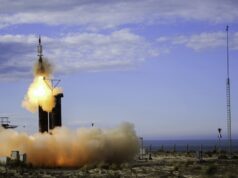
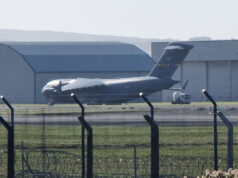

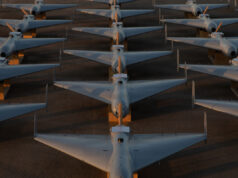

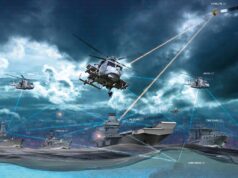

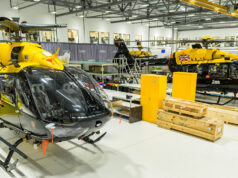

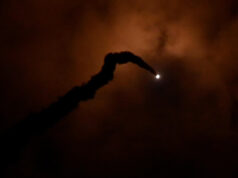

USDJ
I get paid over $220 per hour working from home with 2 kids at home. I never thought I would be able to do it but my best friend earns over $35,000 a month….➤➤➤ CLICK ON PROFILE
It is a platform UK is involved with.
There has been a lot of speculation about them being used off of QEC.
Whilst I don’t think there is enough ooomph for a proper radar it might be useful against drone swarms and a long look over the horizon for passive detection.
More than involved with, the RAF have been running them for nearly twenty years and are getting upgraded versions (Protector).
There is power for a proper radar, unless you mean full power AEW. I think there’s power enough for two radars: the small Lynx SAR built into body near the front that all MQ-9s get, and for a choice of maritime radars in a centerline pod: either an American Raytheon or the UK-built Leonardo Seaspray 7500E v2. The Seaspray is an updated version of the one we have on the Navy Wildcats, and are supposed to be getting on the Army ones. As far as I know the RAF have opted for neither centreline radar in the Protector upgrades and are just running with the Lynx radar for now. There are occasional discussions about getting the Seaspray and using Protector for maritime surveillance.
As for the carrier versions (MQ-9B STOL), time will tell. I saw a presentation a couple of years ago about the development of AEW underwing pods. I’m not holding my breath about that as a carrier option, but perhaps we could get them as a Wedgetail helper.
“There is power for a proper radar, unless you mean full power AEW”
Yes, I did mean full AEW.
Sure it will add something if these kind of platforms can fly out and form pickets up-threat even a less powerful radar would have utility.
But as a replacement for Crows Nest I’m dubious. As an adjunct to Crows Nest it would be useful.
If an adjunct to Crowsnest means keeping Crowsnest, I can’t say I’m enamoured. Maybe for now we follow the USMC lead and work from land, rather than organically on the CSG. Those Voyagers seem to be able to get everywhere to refuel and can carry an extra 45 tons of non-fuel payload. If we still have the two extra Wedgetail MESA antenna, might as well get a couple of the Voyagers rigged up for AEW, but without the E-7s “&C” bit. Instead trial what a decent sensor like MESA can do when connected to the carrier fleet. Voyagers were also the test plane for Raven/Nexus command and control trials, so maybe the bits will fit together (if hit hard enough with a mallet).
The US have used the comms pods on the Reapers for a reason. Connectivity is king.
I really hate not being able to continue with the discussion, as the hierarchy severely limits you, hence why I’ve responded to you SB. I hope George can sort this out as it seriously detracts from a decent discussion?
With Merlin, the aircraft is powered by three turboshafts feeding into a main rotor gearbox. Where there are tap off drives from the gearbox for two main electrical generators. If I remember correctly there is an option for a third generator, which has probably been taken up to enable Crowsnest to run. As the electrical bus load has to handle the extant avionics, any operational requirement defensive aids systems, but then additionally the Crowsnest radar and it management system (should probably include a quad stacked Link-16 as well).
The MQ9 is powered by one turboshaft that drives one electrical generator. Avionics wise it has significantly less than what a Merlin operates and requires. There is a question of whether a MQ9 could operate more than two radars. We know it can, as it has run both a Synthetic Aperture Radar (SAR) as well as a podded search radar. But would this be suitable for a replacement for Crowsnest? As it stands as a like for like replacement, probably yes. But what will a MQ9 AEW provide? Due to the small size of the pod, it will only be able to carry a X-band radar as per the Searchwater 2000 radar in Crowsnest. It will likely be an active electronically scanned array (AESA) radar, compared to the mechanically scanned Searchwater. So it will be a lot more reliable, have significantly faster scan rates, as well as frequency agility, which will help give it a low probability of intercept. The AESA will have a lot less losses from sidelobe generation. So it will transmit and detect further. Therefore, it will give a slightly better performance than the Crowsnest.
So could it compete with the likes of an Erieye, E2D or the MESA equipped E7 Wedgetail? Yes and No!
An X-band (8 to 12GHz) radar will give an inherently better detection performance against targets on or near the surface of the sea or land. The higher the frequency, the higher the target fidelity. Which makes it easier to determine what the target is, especially in a high clutter environment, such as a choppy sea. It should at its basic level be able to detect targets with much smaller radar cross sections, such as drones. But this statement has to be placed in context, especially when a target is covered in radar absorbent materials (RAM), which has been designed specifically to mess with X-band frequencies. Furthermore, due to the nature of how radio waves propagate through the atmosphere. As the frequency increases so does the amount of attenuation, i.e. the air acts like a frequency dependent resistor. To get a comparable detection range to a lower frequency radar, an X-band must transmit at a much higher power level and at some point you will need to look at active cooling solutions for the power amps etc. Radars that operate in the lower frequency bands suffer increasing amounts of clutter and noise, that require significant amounts of digital signal processing to remove and solve. Plus their beam size increases in diameter the lower the operating frequency, meaning the target fidelity is much lower.
In comparison to the other main players in the AEW field, being Saab’s Erieye which operates in the S-band (2-4GHz), The E2D Hawkeye’s AN/APY-9 that operates in the upper UHF band (0.5 to 1GHz) and the Wedgetail’s MESA that operates in the L-band (1 to 2GHz). These radars can detect a fighter sized target (1m2 RCS), at least twice as far as an X-band radar (used for AEW). In the case of the Hawkeye and Wedgetail well over three times as far, with the new version of Erieye being at least three times as far. However, the downsides to using these radars, is the necessary size of the antenna array. Which for minimal internal losses needs to match the transmission frequency (wavelength) with the antenna element size. For example the Erieye’s is housed in a rectangular box measuring some 9m long. The Hawkeye’s AN/APY-9 antenna array is contained in a mechanically spinning 7.3m diameter radome. The Wedgetail’s MESA is a huge rectangular panel measuring 10.8m long by 3.4m high.
With this in mind, why is the antenna size so important? To be brutally honest, in general the larger the antenna, the further you can detect a threat, which gives you more time to react to the threat. Which for a carrier group is critically important. As the carrier based AEW’s radar will determine how far the radar horizon is, but also how far it can detect very small RCS threats. A carrier group “needs” to detect any airborne threats as far away as possible. Which is also as important for the aircraft carrying the radar. For example:
A Super Etendard carrying an Exocet in the Falklands War. Meant that to get within the missile’s maximum operation range of 72km (43 miles). The aircraft would have to fly reasonably high to initially detect a target and then work out what that target actually was. But with the T42’s radar and Sea Dart, approaching a ship at height was inviting trouble. So approaches after initial detection had to be made at low level. If say the ship’s radar horizon was at 20km. The aircraft could pop-up, activate its search radar, lock on to the target and feed the info to the Exocet. Which is then fired off in a matter of seconds. Whereby the aircraft then retreats behind the horizon leaving the Exocet to do its things. The ship may have got an initial lock on to the aircraft, but as it disappears behind the horizon, it is now safe from attack. Meanwhile the Exocet is steaming in towards the ship 5m over the sea at Mach 0.93 (1148km/h). It was this type of attack that the SeaKing AEW (ASAC) was invented for. As it could then initially detect threats out past 150km.
However, today, if we replaced the SeaKing with a Crowsnest equipped Merlin and it was now facing off against a Russian Su35, that was leading other aircraft loaded with anti-ship missiles. With weapons fitted a Su35 has a RCS greater than 5m2. However, it can be armed with the R37M (AA11 Axehead) long range air to air missile. This missile has been specifically designed to take out AEW aircraft. It has a reputed range with the 1st stage rocket booster of between 300 and 400km and a terminal speed approaching Mach 6. In essence the Su35 will detect the Crowsnest whilst remaining outside of its detection range and be able to launch the R37M. The Crowsnest will likely only detect the R37M, when its well within 200km range. Not giving it long to respond and evade. Any AEW platform solely relying on an X-band radar will suffer the same problem. An attacker will detect the radar, before the defender can detect the aircraft launching a very long range air to air missile such as the R37M. Hopefully, if the Crownest is operating near a carrier group, a T45 might be able to use its Aster to intercept the R37M. If not and the Crowsnest gets taken out, the carrier group will face the same problem against sea skimming missiles, that the ships faced during the Falkland’s War.
For an organic AEW aircraft supporting a carrier group, they need an aircraft platform that is either manned or unmanned, to carry at a minimum a S-band radar, but preferably something that can at least match or better the maximum release range of an R37M (approx 400km). Where it could detect the launch aircraft and send the CAP to intercept. Even if the CAP do not get in range to intercept the launch aircraft. By transmitting we are coming for you, the launch aircraft will turn away. Thereby removing any mid-course corrections sent to the R37M. If the AEW can shut its radar down momentarily then Foxtrot Oscar to a new location, it may get outside the missile’s radar detection cone. Or if its linked to a T45, command an Aster to take out the missile itself, before it gets too close. Either way the AEW platform is still in business and will be able to detect the second anti-ship missile carrying wave of aircraft. Though if it had the capacity, having a look down horizon scanning X-band radar would also be really handy. As that will be able to detect sea skimming missiles against the sea, a lot better than the lower frequency radars.
@DaveyB
X-band gives finer targetting ability and L-band more distant. However, at what distance can L-Band lock onto the kind of targets we are interested in? Stealth aircraft, missiles and so on. Can we target further away with L-Band as well as detect and identify?
Presumably there is some kind of think time between knowing something is there and preparing to fire, so the longer warning period, the better. Where I’m going with this is: if the only difference between when we can attack an incoming missile (for example) is think time, the problem can be mitigated by automous responses (at the expense of some blue-on-blue). If something with L-Band can stand off, indentify, target and destroy something equipped only with with X-Band and out of view of the X-band, we really need us some long-range AEW. Even picket helicopters would help.
I just received $6618 working off my Iaptop this month. And if you think that’s cool, my divorced friend has twin toddlers and made 0ver $15781 her first m0nth. It feels so good making so much money when other people have to work for so much less.
This is what I do……… work43.marketingℱ
please don’t copy”ℱ” In Url Thanks
Hello everyone🤍 I work as Hiring Administrator, and my office is looking for a new staff who wants to work remotely from home or at our offices. The main role is reviewing and approving apply requisitions, entering candidates information in to the company system, which can be part-time/full-time with an Weekly wage of $1850 (For full-time) .work at 6pm-11pm $350_$400 per day.The job is flexible and can be done on weekends. Great for new moms, retirees, or anyone looking for a side job or working from home.
If anyone is interested Visit here…… 𝐰𝐰𝐰.𝐏𝐚𝐲𝐜𝐚𝐬𝐡𝟏.𝐬𝐢𝐭𝐞/
Reply to Jon,
Yes, there are number of ways you can employ L-band or UHF band radar to produce the tracking information needed for a missile solution on a target. The best way to look at this, is how the E2D Hawkeye has been used in conjunction with Arleigh Burkes and F35s. Where it has been used to detect the threat, then provide the missile solution, using the ship and aircraft purely as a magazine for their use. Traditionally you wouldn’t be able to use a UHF or L-band radar to produce the quality of information needed for a missile solution, partly due to the wider beam spread at distance. But with very expensive signal processing you can mitigate some of these issues to give it a “good enough” solution. There is also the less robust method of doing this, where the radar puts the missile in the general area, and the missile’s active radar then looks for the target. Which is probably the method that both Russia and China use to counter stealth.
At some frequencies, there are some particular behaviours of how radar “waves” interact with the target, that allow radars to “see” stealthier targets. One of these effects is based on Rayleigh scattering, which is where the wave comes up to either an abrupt end point on the target, such as where the wing’s leading edge meets the wing tip or where the area is rounded, such as the cockpit canopy and is then retransmitted in multiple directions. Some of these scattered transmissions may then be detected by the receiver, but their amplitude is very small. So you will require a very sensitive receiver and a very high gain (large surface area) antenna. Another method is where a straight edge resonates with the lower wavelength transmission. This is where the radar’s wavelength is about twice the length of the straight edge. which in turn sort of acts like an antenna. This method is particularly true for UHF and L band radars. Which is one of the ways they can detect fighter sized aircraft so far away, as the fighter’s wing tip/tail fin tip etc resonates with the radar wave.
The “Think Time” is how the T45 with its L-band S1850M and S-band Sampson co-operate I believe. Where the S1850M does the very long range volume searching and Sampson does the target identification and tracking. You could in theory have a pair of T45s and a QE using their S1850M as a bi-static radar. Which would give you a tighter volume of air to determine where a target is. Which could then be used for a missile solution for Aster. But it would need some very precise time keeping between all three radars to work. Even with the Sampson radar placed 40m above the mean sea level, the radar horizon is still only 26km away. Which gives the crew very little time to clarify the threat and generate a response. Most of this time will be automated, with a human only intervening just in case.
For an AEW platform, UHF will give the best detection range for the least amount of power, but will require the most amount of signal processing to deliver a good enough targeting solution. By all rights the Hawkeye’s AN/APY-9 AESA radar is under performing, as it antenna shape and size won’t give it the best performance. For this, the array needs to more replicate the Wedgetail’s MESA array shape and size. Similarly with L-band, it will require more power to match UHF, but not as much signal processing, plus benefit from using a smaller antenna. So you can better match the requirements. But the aircraft still needs to be big enough to carry the weight and power it. S-band may be the best compromise for a carrier based platform. Though it does not benefit from the resonance affects as much that UHF and L-band radars have. But it will provide significantly better fidelity of the target for a decent missile solution. But will also significantly benefit from signal processing to increase the overall detection range.
Based on the Saab Gobaleye, that uses the latest Erieye radar. Saab have said this can give a 550km detection range, but like a lot of companies won’t state what the target is or its RCS. But at 1 tonne, the aircraft still needs to be pretty substantial to carry it. Though a lot of the signal processing could be done remotely, which will cut down some of the weight. Again the shape of the radar array is not giving it the best performance.
~@DaveyB Thanks for that. What do you think of the Elta S-Band antenna on the Embraer P600 AEW? It seems smaller and lighter than the Erieye which Embraer have incorporated in the past, and is a 240° (sides only) design, whereas I’ve read arguments over the Erieye’s coverage with numbers between 300° and 360°. The Americans used 240° on the MQ-8C, but that was an ISR set up. Multiple cheaper drones deployed simultaneously seems to be a compromise we could live with and I’m wondering whether the wing pods being developed for the MQ-9B might force a similar compromise in X-Band.
I think the Embraer P600 AEW is ok for Brazil. It is a cheaper version of the Erieye that Brazil also used. Why cheaper? This is based on the size of the P600’s antenna array. The array is slightly taller than the Erieye’s, but is less than half the length. The size and area of the antenna is crucial to the radar’s performance. For AESA the bigger the array the more transmission power it can generate. But also the more sensitive it is as a receiver.
In general most electronically scanned arrays be that PESA or AESA have a field of view in azimuth of +/- 60 degrees and +/- 45 degrees in elevation. The best way to imagine it is to look at say the positive side of a sine wave. The +/- 60 covers the top part of the positive wave. Once you go past 60 degrees like the sine wave the performance drops off steeply. So the array will work past 60 degrees, it’s just you are getting diminishing returns for your effort. Also as the beam is created by mutual interference, as the beam is tilted over more, there is less and less of the antennas in the array that can be used to create and steer the beam, additionally the beam’s diameter increases. Which then means you need a lot more clever signal processing to get a reliable target image.
On the E7 Wedgetail, the “Top Hat” MESA array has an array mounted back to back on either side, to give 240 degrees of view. It uses arrays placed in the forward and aft parts of the Top Hat to fill in the dead zones, thereby giving 360 degrees of view.
The Saab blurb I’ve read says the Erieye has a 150 degree field of view per side, giving a total of 300 degrees. There is no cheating physics, so I’d expect at least the extremes left and right, will not generate the same power or sensitivity as in the middle of the array.
With the MQ9, it should be able carry either a single mechanically rotating Leonardo Osprey 50 or the Thales Seaspray AESA, under the aircraft’s belly in a pod. There should be no need to cut down on the antenna array area, thereby maximizing performance. Depending on how much capacity the engine and generator has. It would be worth seeing if the drone could carry and power either of these two radars mounted in a back to back configuration?
“Okay for Brazil” – a tad damning. One question is could it be lofted from a carrier and would it be better than the low SWaP alternatives?
I don’t think power is an issue for low SWaP AESA radars. Aren’t antennas in the 1-5kW range? The Honeywell TPE331-10 turboprop on the MQ-9B is rated at 900 hp (671 kW).
What if it were a problem? I saw an Aussie micro-generator that delivers 20kW in 48kg. Two Osprey 50s back-to-back, problem gone. But as you scale generators, power to weight just gets better. A 600kW Rolls Royce turbogenerator designed for the eVTOL market comes in at 150kg, scaleable at 4kW/kg. Honeywell are claiming 900kW in 127kg, scaleable at 8kW/kg.
I think the issue with MQ-9B STOL on the carriers will probably be the weight vs the size of the runway for both takeoff and landing, rather than power. However, the RAF’s MQ-9B can get off the ground on a long runway with a two or three ton payload. 900kW would be enough power for a reasonable AEW in the pods, wouldn’t it? They’d be still too short; although perhaps good enough for Brazil? This is why I said I thought they would be a better adjunct to the Wedgetail than the Crowsnest. Given enough runway, the UAVs can lift a lot.